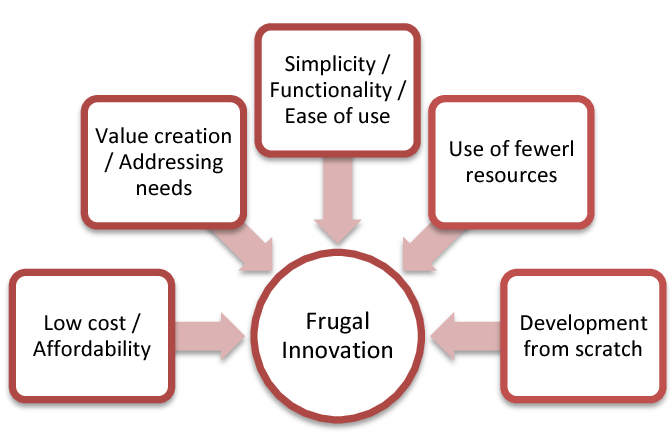The old innovation paradigm was called closed innovation which was based on the strict control of successful innovation. Under this view, organizations generate their own ideas, develop them, finance them and support them on their own. In short, companies maintain complete control of all aspects of the innovation process and inventions are kept highly secretive. Traditionally many organizations followed this model and it worked well for most of the twentieth century. However, over the years a number of factors have led to the erosion of the closed innovation approach. First, due to an increase in the mobility and availability of highly educated people, large amounts of knowledge leave the research laboratories of many companies. Second, the availability of venture capital has increased significantly in the recent past making it possible for promising ideas and technologies to be further developed outside the organization. Third, other firms in the supply chain began Continue reading
Modern Management Approaches
Corporate Social Responsibility as a Source of Competitive Advantage
Corporate Social Responsibility (CSR) means that a corporation should be held accountable for any of its actions that affect people, their communities and their environment; it may require a company to forgo some profits if its social impacts are seriously harmful to the corporation’s stakeholders or if its funds can be used to promote a positive social good. Tougher competition recently has compelled the firms to adopt something that is different from their rivals and has also put a pressure on the firms to examine their philanthropy and other social activities, by doing so the company can sometimes achieve a strategic advantage over its competitors. There is a business case for CSR but it is much less important or influential than many proponents of civil regulation believe, CSR is best understood as a niche rather than a generic strategy: it makes business sense for some firms in some areas in Continue reading
What Is Coworking?
One of the grimmest predictions about the future was described by Robert Putnam in his work on social capital. He envisaged low likelihood of participation in community life, smaller groups of friends, even less happiness, and lower perceived quality of life. Furthermore, the enthusiasts of globalization and internet predicted that since people do not have to be together in order to work together, so simply they will not be. Both of these statements are deemed fallacious when recent innovative developments like coworking spaces are considered. Instead of dividing people and further rupturing community life, they reintroduce collaboration and community building through establishing an innovative office design that is being implemented worldwide. Coworking has been present for centuries, but the first forms of collaboration appeared in the beginning of the 20th century. Artists from around the world gathered in Paris to live and work. One of the establishments, La Ruche, was Continue reading
Regeneration of Offices and Modern Approaches to Working
Design of a contemporary workspace has a responsibility to comply with current respect of social change, work flexibility, evolving technology, sustainability and a diverse workplace. Current offices are in need of constant innovative solutions that will sustain the modern way of development in co- working places. Contemporary offices are in need of stable development and adjustments to existing social principles. Present day work environment has significantly changed throughout the decade. Co-working office spaces are now in need of a relaxed atmosphere. Studies show that contemporary culture in the way people work allow them to prosper better within the business markets. Twenty-first century office design comprises in merging single user and collaborative needs to give the best possible opportunities. From large scale offices to live/work projects and small-scale refurbishments, the type of social needs imposes a movement of the idea how every office can be improved. Within the corporation’s framework employers Continue reading
A Brief Introduction to Six Sigma Methodology
The creation of Six Sigma Methodology is understood to be traced back to Carl Friedrich Gauss and introduced as a measurement in variation in organizations. Six Sigma name comes from the Greek alphabet “Sigma” which mathematician or statisticians uses in statistics to find a standard deviation. Motorola was the first company to use Six Sigma, to measure the quality of products and services from within. In the process of Motorola using Six Sigma, it helped them to pinpoint mistakes such as finances and operations. Six Sigma’s core philosophy was based on business process and customer requirements, extensive training to employees, focus on the organization, and creating an improved system. Six Sigma Methodology describes a business improvement approach that seeks to find and eliminate causes of defects and errors in manufacturing and service processes by focusing on outputs that are critical to customers and a clear financial return for the organization. Continue reading
Importance of Stakeholder Engagement in Business
Stakeholders are all those people or businesses that are essential for a company, because they contribute to keep it afloat or in operation. They can be affected if their expectations or needs are not met. There are three interested parties: suppliers, customers and investors. Each of them is an indispensable part. Without its essential contribution, the business could not be sustained or built. Suppliers provide the input, customers are those who consume our products and refer us to new prospects and investors or owners, contribute their capital for the sustainable development of the business. Stakeholders can benefit or be harmed by any action or decision taken. That is why every business or company must identify them and know their needs and expectations to fulfill them. Since above all, they are the ones that contribute in a special way to our business. Stakeholders have increasingly become an essential component of business Continue reading




